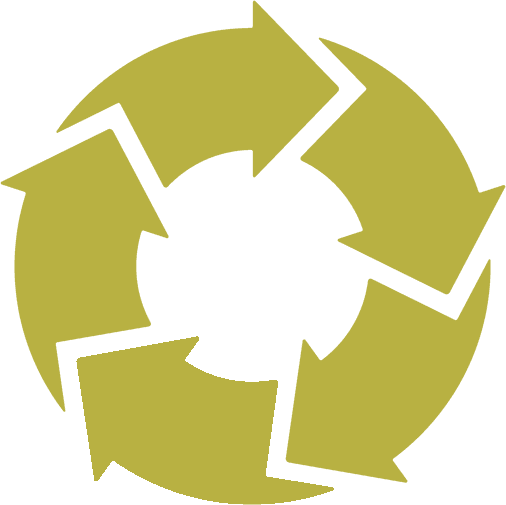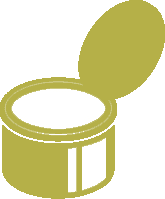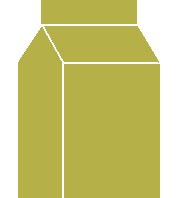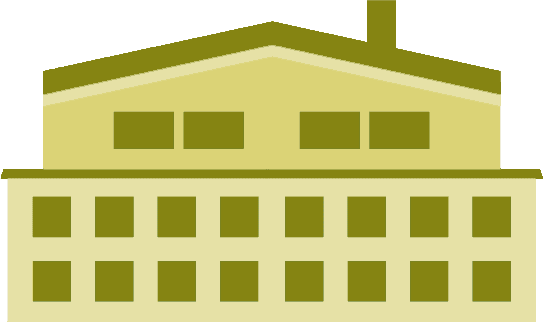Recycling
What happens to household packaging after it has been collected, what affects recycling and what can you as a producer do to ensure that more packaging is recycled?
In brief
How we take care of collected packaging
The packaging waste from households is treated at the sorting and recycling facilities we cooperate with. Our ambition for the packaging we are responsible for is for it to be recycled as much as possible. We therefore reward circular material recycling over linear. If circular material recycling is not possible, however, linear material recycling is preferable to energy extraction.
- Material recycling – The packaging waste is processed so that it can be used as raw material in the production of new packaging or products.
- Circular material recycling – the recycled material maintains a high quality and can be used as raw material in new packaging, again and again – the circular flow is closed.
- Linear material recycling – the quality of the recycled packaging material is too low to be used as raw material in new packaging. The material is instead used as a raw material in other products, and cannot be recycled more than once. The need for newly produced raw materials remains.
- Energy recovery – the packaging material cannot be materially recycled but is incinerated. The need for newly produced raw materials remains.
All plastic packaging we collect from the municipalities is transported to Svensk Plaståtervinning, for sorting at the Site Zero facility in Motala. Here, twelve plastic fractions can be sorted out at the world’s largest and most advanced sorting facility for plastic packaging.
Site Zero enables circular recycling of up to 56 percent of the plastic packaging that passes through the facility, 21 percent of the packaging that is sorted can be recycled to a lower quality and the material can rarely be included in new packaging. Some process loss also occurs in the sorting and recycling process.
The sorted plastic is then sent to certified partners within the EU for material recycling. Svensk Plaståtervinning is preparing to be able to wash and granulate the plastic on site at Site Zero in the next step.
The paper packaging we pick up from the municipalities is material recycled at a recycling paper mill. Simply put, you can say that there are two different processes for recycling paper packaging.
They either go into a process where it is possible to recycle the paper fibres, also in packaging of mixed materials such as beverage cartons (eg milk cartons). In Sweden, that process is only available at Fiskeby Board in Norrköping, which receives about half of the packaging that we have collected from the municipalities.
From the recycled paper fibres, Fiskeby produces recycled cardboard which is sold to printers and packaging manufacturers. There, it is printed and punched into various formats, to be resurrected as pizza boxes, pasta packages and the like.
Remaining paper packaging is transported to recycling facilities in northern Europe. Pre-sorting usually takes place here, where packages of mixed materials are sorted out and sent to energy recovery. This is because most mills cannot handle paper packaging of mixed materials in their process. However, our goal is that all packaging containing paper fiber must be recycled.
The glass packaging we collect from the municipalities is delivered to Svensk Glasåtervinning in Hammar. Here, the glass is broken into smaller shards as a partial step in order to be sorted into raw material that is recycled in the glass mills in the next step.
About 60 percent of the recyclable material becomes new glass packaging, the rest becomes glass wool and foam glass. Uncolored and brown glass become new packaging in the form of glass jars and glass bottles. Most of the green glass is treated in the same way, but some is crushed and ground into smaller pieces to become raw material for the manufacture of glass wool insulation. Broken glass of lower quality becomes foam glass.
All the metal packaging we collect from the municipalities is delivered to Skrotfrag AB and transported to their facilities in Järna and Ulricehamn. At the plant, the metal packaging is sorted with magnetic help. Manual sorting also takes place where missorted material, such as nitrous oxide tubes, is removed.
Steel and aluminum packages are separated from each other. The sorted metal packaging is then sent to various smelters for material recycling. All steel and aluminum that is sent to smelters is recycled circularly and becomes new products and packaging. The smelters make plates, profiles and ingots that can become new raw materials or be used for example car bodies, tire rims or engine parts.
As a producer, do you want to know more about how the recycling process works for a certain type of material?

Swedish Plastic Recycling
When you are affiliated to us, your plastic packaging gets the chance to be recycled at their new sorting facility Site Zero – the world’s largest and most advanced plastic recycling facility.
With Site Zero, Swedish Plastic Recycling doubles its capacity and triples the number of plastic types it can receive, sort and recycle.
In this way, we create the conditions to recycle all of our producers’ plastic packaging and create circular plastic flows.

Swedish Glass Recycling
The glass packaging we collect from municipalities is delivered to Swedish Glass Recycling in Hammar. They currently recycle over 90 percent of all glass packaging in Sweden.
Every weekday, Swedish Glass Recycling receives 900 tons of glass packaging, which they sort, crush and process into a new raw material.
Glass can be recycled over and over again and become new wine bottles and jam jars.

Skrotfrag
All metal packaging we collect from the municipalities is delivered to Skrotfrag AB and transported to their facilities in Järna and Ulricehamn.
At the facility, steel and aluminum packaging is separated from each other using magnets. The sorted metal packaging is then sent to various smelters for material recycling.
Metal packaging can be recycled over and over again and become new products and packaging.
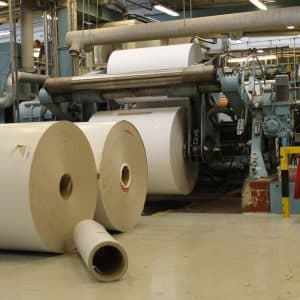
Fiskeby
About half of the paper packaging we collect from the municipalities is material recycled at Fiskeby Board in Norrköping.
Fiskeby can also recycle the paper fibers in packaging made of mixed materials such as beverage cartons.
From the recycled paper fibres, Fiskeby produces recycled cardboard which is sold to printers and packaging manufacturers, to be resurrected as pizza boxes, pasta packaging and the like.
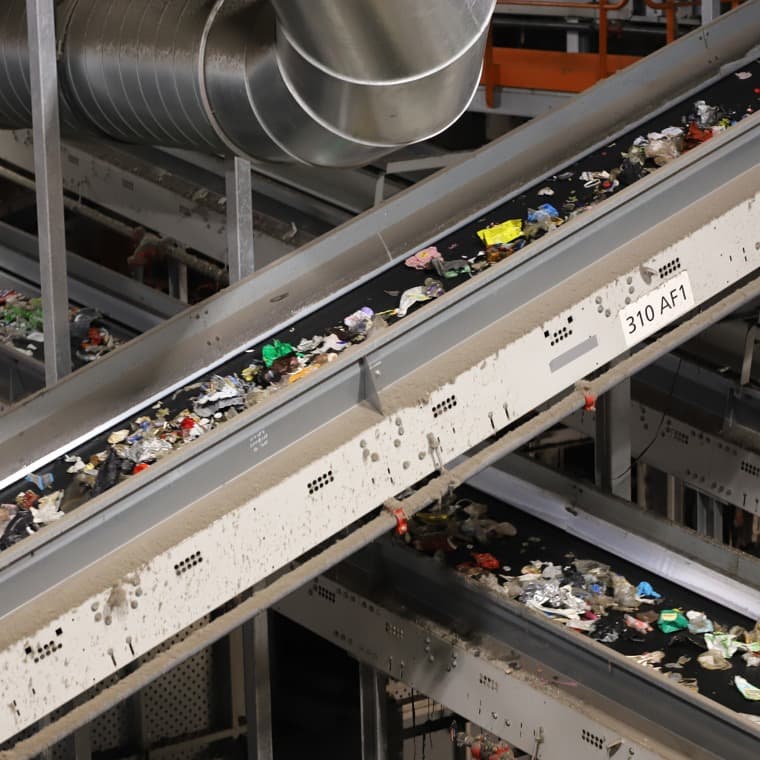
Sorting matters
Advanced sorting results in lower climate impact
In a study, the IVL Swedish Environmental Institute, together with TERRA and Svensk Plaståtervinning, has examined the climate impact of three different ways of recycling plastic packaging.
The results show that energy recovery (without sorting and material recycling) has the greatest climate impact, closely followed by low-quality recycling. High-quality material recycling through advanced sorting, on the other hand, has a significantly lower climate impact.
The better the sorting, the more times the material can be recycled. At Site Zero, plastic packaging is sorted into twelve different fractions.
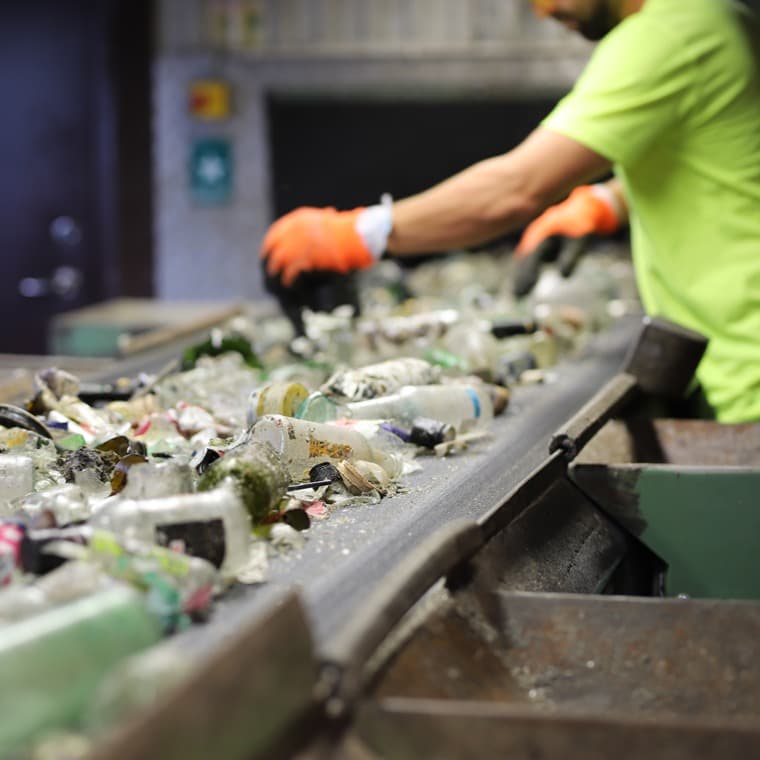
statistics
Material recycling
The material recycling rate shows how much of the packaging that producers have put on the Swedish market has been material recycled and become new, recycled raw material. The Swedish Environmental Protection Agency is the authority responsible for national statistics for material recycling of packaging.
Starting in 2024, Näringslivets Producentansvar is responsible for annually reporting information to the Swedish Environmental Protection Agency that forms the basis for the authority’s calculations of the recycling rate for various packaging materials in Sweden.
Examples of information that is reported to the Swedish Environmental Protection Agency for this are:
- What volumes of different packaging materials our affiliated producers put on the market during the year.
- What volumes of different packaging materials we collected and handled from each municipality during the year.
- What volumes of different packaging materials that have been taken care of through material recycling, energy extraction or otherwise recycled or disposed of.
- If collected packaging has been processed in Sweden or abroad.
Factors affecting material recycling
The packaging waste we receive is transported on to our procured partners and suppliers, who are responsible for the packaging material being recycled as far as possible.
There are several factors that affect the material recycling rate, i.e. how large a percentage of what producers put on the market is recycled.
A prerequisite for the packaging to have a chance to be recycled is that the end user sort the packaging when it has fulfilled its purpose.
The packaging needs to be adapted for material recycling when it comes to, for example, material selection, composition, design and color.
It also needs to be easy for the consumer to empty the packaging of its contents. If it consists of several different types of material, they must be easy to separate for sorting.
Using the national marking with pictograms for sorting also makes it easier for the end user when the packaging is to be sorted at source.
The collected packaging needs to maintain a certain quality so that it can be recycled to a good quality. The possibilities deteriorate if, for example, the material is contaminated, has started to mold or is too mixed with other waste.
Both sorting and recycling facilities have different capacities and different technical conditions for processing and recycling the packaging that is collected. In order to avoid unnecessary transport, we strive to use facilities in Sweden for sorting and recycling, but as this is not always possible, we also collaborate with actors in northern Europe.
In order for a package to be seen as recyclable, there must be a demand on the market to buy and use the recycled raw material.
Everyone needs to contribute to increase material recycling
In order to meet the regulation’s requirements for increased material recycling, it is required that all parties in a packaging’s life cycle fulfill their responsibilities.
Näringslivets Producentansvar
NPA works to achieve Sweden’s goals for material recycling through collaboration with selected suppliers for sorting and recycling the collected material, and through support and advice to our affiliated producers regarding design for recycling.
Producer
In order to increase the material recycling of packaging, it is important that the producer ensures from the outset that their packaging is designed to be material recycled to the greatest extent possible. Feel free to contact our material specialists and use our packaging manuals.
Make it easier for the consumer to sort the packaging correctly, by marking them with the national sorting symbols that are also found on recycling bins.
Contact our material specialists
Read more about labeling and download the pictograms
Consumer
When the packaging has played its role, the consumer has an obligation to sort and return their packaging for recycling. Packaging that is not source-sorted never gets the chance to be recycled.
More people must sort more to bring Sweden closer to the material recycling targets for packaging.
On the sopor.nu site there is information and a sorting guide that consumers can use for questions about source sorting of packaging and other waste.
Municipality
From 1 January 2024, Sweden’s municipalities have the collection responsibility for household packaging. The material quality of the collected packaging is an important factor for material recycling.
The municipalities also have an information responsibility, which means that they must provide information to the residents about why it is important to sort their packaging and how to do it correctly.
Get inspired
Good examples
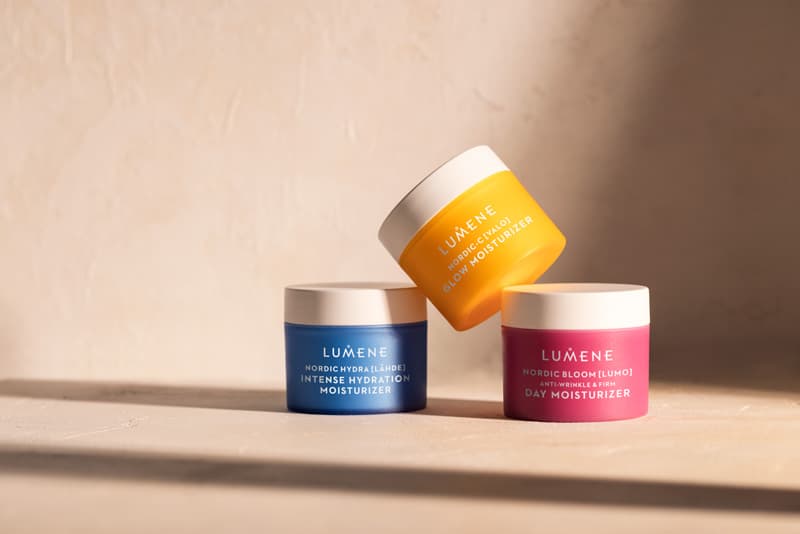
LUMENE’s new moisturiser jar uses 44% less packaging material
LUMENE, a leading Nordic beauty brand specialised in skincare, face makeup and colour cosmetics, has made a commitment towards a more sustainable future, something that is visible in their recently launched 50 ml moisturiser jars.

“Producer responsibility gives us an incentive to develop”
Pågen is Sweden's leading bakery in packaged fresh bread, yeast, coffee bread, rusks, sausage and hamburger bread. They have around 30 different breads in their range, with brands such as LingonGrova, Levain and Hönö. In total, Pågen bakes around 50 different products and their bread is sold in Sweden, Denmark, Finland, Norway, Iceland and Germany.
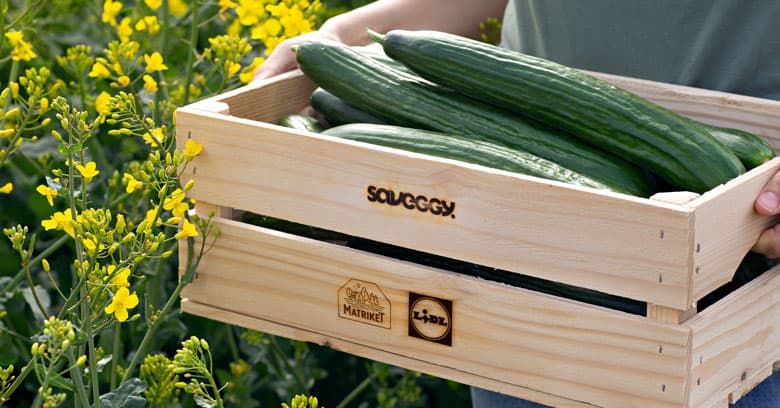
Plastic-free cucumber from Lidl
Lidl is reducing the amount of packaging material by introducing plastic-free cucumbers in selected stores. Thanks to a thin plant-based cover, Lidl, in collaboration with Saveggy and the producer Sydgrönt, has reduced the use of packaging material without compromising the quality and durability of the product.

